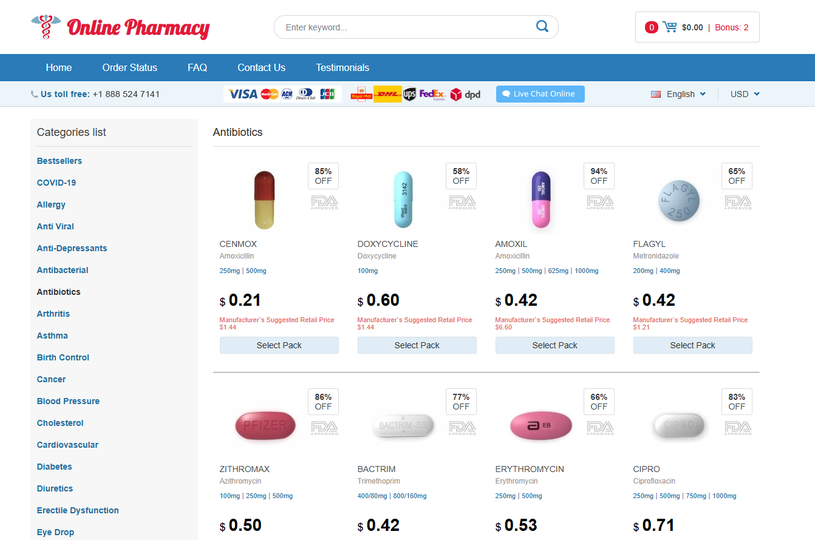To Order Bactrim No Prescription Visit Our Pharmacy ↓

Proper Usage: Following Instructions for Optimal Results
If a dose is missed, it should be taken as soon as possible, unless it's nearly time for the next scheduled dose; in that case, the missed dose should be skipped to avoid doubling up. Bactrim is a widely used antibiotic that has proven to be effective in treating various bacterial infections. Uncovering the Advantages of Bactrim for Travelers. 4) Potential Side Effects: Understanding the Risks and Precautions. Adults often take the medication twice a day for a fixed period, usually between three to fourteen days. Consuming plenty of fluids can also support kidney function, which is especially important while on this medication. Some common side effects of Bactrim include nausea, vomiting, diarrhea, and skin rashes, while interactions may occur with other medications like blood thinners or diuretics.
The Unique Mechanism of Bactrim's Antibacterial Action
Peel your fruits and vegetables: When consuming fruits and vegetables, peel them yourself to minimize the risk of contamination.5. The symptoms of UTIs can range from mild discomfort to severe pain and can significantly impact a person's daily life. Always feel empowered to ask questions and express concerns, ensuring that your health decisions are made with clarity and confidence. Patients should seek immediate medical attention if they experience any signs of an allergic reaction while taking Bactrim. The occurrence of Stevens-Johnson syndrome, although rare, is a severe reaction that requires immediate medical attention. Given its efficacy, Bactrim is a go-to medication in the arsenal against bacterial infections. This antimicrobial agent operates by impeding the growth and multiplication of bacteria, delivering a one-two punch that disrupts various stages of the bacterial life cycle.
Risk Factors: Who Should Be Cautious with Bactrim
The typical adult dose of Bactrim for urinary tract infections (UTIs) is usually one double-strength tablet (800 mg/160 mg) taken orally every 12 hours. By preserving the effectiveness of Bactrim and other antibiotics, we can continue to rely on these life-saving drugs for the treatment of bacterial infections in the future. Currently, Bactrim is primarily used to treat urinary tract, skin, and respiratory infections. These interactions can affect the effectiveness of Bactrim or increase the risk of side effects. For children who take it as a liquid suspension, shaking the bottle well before each dose ensures proper mixing of the medication. This combination works synergistically to target and inhibit the growth of bacteria by disrupting essential metabolic pathways. Engaging healthcare professionals, patients, and the public through targeted campaigns is crucial.
Acne under Siege: Bactrim's Mechanism of Action
When deciding on a treatment course, doctors consider a patient’s allergy history, potential antibiotic resistance, and local resistance patterns. Unlike some antibiotics, Bactrim employs a targeted approach by combining two active ingredients—sulfamethoxazole and trimethoprim—which work synergistically to obstruct bacterial growth. This comparative edge is further illuminated through patient stories, reinforcing the importance of tailoring acne treatment to the individual's unique skin blueprint. This broad-spectrum antibiotic is commonly used to treat infections such as urinary tract infections (UTIs), ear infections, bronchitis, and traveler's diarrhea. Emerging evidence suggests that it may also be beneficial in preventing traveler's diarrhea. The cycle of misuse and resistance thus jeopardizes both the clinical and economic aspects of healthcare, underscoring the need for strategies to promote the judicious use of antibiotics such as Bactrim. Some specialists even use the term "Pharm Party" to describe how casual mixing of prescription drugs and alcohol can turn dangerous very quickly.
Bactrim's Birth: a Revolutionary Discovery in Antibiotics
Drink plenty of water throughout the day, unless otherwise advised by your healthcare provider. Bactrim, a combination of sulfamethoxazole and trimethoprim, has long been recognized for its powerful antibacterial effects. Research has indicated that Bactrim can be effective in combating certain respiratory conditions, such as bronchitis and pneumonia, caused by specific types of bacteria. When using Bactrim, it is crucial to complete the full course of treatment as prescribed by your healthcare provider, even if you start feeling better before finishing the medication. One prevalent myth is that Bactrim works for all kinds of UTIs, irrespective of the causative organism. As the curtain is lifted, the hidden potential of Bactrim shines through. Recognizing and addressing common side effects can help prevent more severe complications down the line.
Unveiling Bactrim: What It Is and How It Works
In the context of Bactrim, strategies to combat resistance primarily revolve around responsible antibiotic stewardship and innovative research. With Bactrim, individuals can regain control over their health and reduce the burden of recurrent UTIs. Clinical studies continue to refine the optimal duration, striving to reduce potential side effects while maintaining high efficacy in clearing infections. But with great power comes great responsibility. Other potential side effects of Bactrim include nausea, vomiting, diarrhea, and loss of appetite. While other treatments might be reaching for a broad spectrum cocktail, Bactrim zeroes in with precision, potentially offering relief where other medications have stumbled. Bactrim's broad-spectrum antimicrobial activity against bacteria extends to some respiratory pathogens.
Other Antibiotics: What Sets It Apart?
This makes Bactrim an excellent choice for treating infections of the respiratory tract, urinary tract, skin, and gastrointestinal system. Additionally, Bactrim has demonstrated its efficacy in the treatment of respiratory infections. Common adverse reactions include nausea, vomiting, loss of appetite, and mild skin rashes. It is recommended to always inform your healthcare provider about all the medications you are currently taking to avoid any harmful interactions. Additionally, patients should also limit the consumption of alcohol, as it can intensify potential side effects like nausea and dizziness. Researchers are investigating the potential of Bactrim to be effective against these resistant bacteria, either as a standalone treatment or in combination with other antibiotics. The medication works by inhibiting the growth and multiplication of bacteria, ultimately clearing the infection.
Debunking Common Myths Surrounding Bactrim and Utis
By understanding the lesser-known uses of Bactrim in respiratory ailments, healthcare professionals have an additional tool to combat these conditions and improve patient outcomes. Tetracyclines, particularly, have long been the backbone of antibiotic therapy for acne, thanks to their anti-inflammatory properties and the ability to inhibit P. Bactrim's broad spectrum antibiotic properties help to eliminate the infection, allowing the sinuses to heal and reducing discomfort. As Bactrim becomes less effective against certain bacterial strains, health care professionals find themselves with fewer tools to effectively manage and treat infections. Pregnant women are advised to avoid Bactrim, especially during the first trimester, as it may affect fetal development. Sulfamethoxazole inhibits the production of folate in bacteria, while trimethoprim blocks the action of an enzyme necessary for bacterial DNA synthesis. These extra advantages highlight the potential of Bactrim as a versatile therapeutic agent with multifaceted benefits for patient health.
Bactrim's Dual Action Against Uti Pathogens
As a result, Bactrim halts the spread of infection, offering relief to those affected by this common yet distressing condition. Due to its broad-spectrum efficacy, Bactrim is commonly prescribed for various bacterial infections such as urinary tract infections, middle ear infections (otitis media), bronchitis, and a type of pneumonia caused by Pneumocystis jirovecii. Often contracted in healthcare settings, MRSA can stat escalate from minor skin infections to life-threatening conditions such as sepsis or pneumonia. Maria, a 34-year-old teacher, shared a candid story about her experience with Bactrim. By taking a low dose of Bactrim over an extended period of time, individuals prone to recurring UTIs may be able to reduce the frequency and severity of their infections. These types of infections can be caused by various bacteria, and Bactrim is effective against many of them. 🌟 Despite the emergence of newer antibiotics, this combination of sulfamethoxazole and trimethoprim remains a cornerstone in the treatment of urinary tract infections, respiratory infections, and several types of diarrhea.
The Dynamic Duo: Understanding Sulfamethoxazole and Trimethoprim
When considering Bactrim for pediatric treatment, is critical for parents to understand that it is only effective against bacterial infections—not viral ones, such as colds or flu. In such instances, healthcare providers may recommend alternative antibiotics that target specific bacteria. In such cases, alternative antibiotics may need to be considered. While shorter courses are sufficient for uncomplicated UTIs and minimize the risk of side effects, complicated or severe infections may necessitate prolonged therapy. Additionally, inadequate patient adherence to antibiotic regimens can lead to incomplete treatment, allowing bacteria to develop resistance. Potential ReactionsBactrim, a combination antibiotic containing sulfamethoxazole and trimethoprim, is known to have several potential side effects. The drug is particularly effective against bacteria such as Escherichia coli, Klebsiella species, and Staphylococcus aureus.





